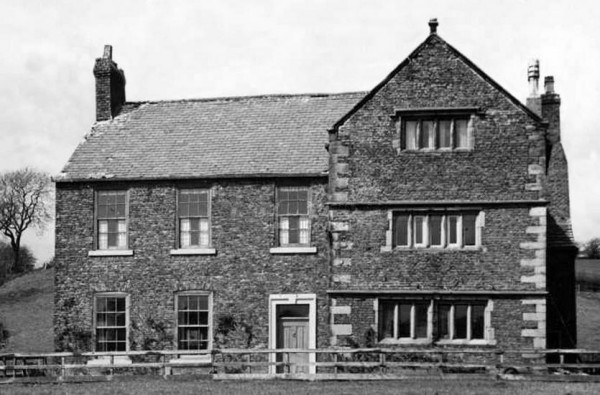The Bannister Hall Doll was associated with Bannister Hall (Higher Walton) knocked down after the Second World War. Here is the basic story where Bannister Hall seems to have been rubbed out of the story and replaced with a man called Bannister!
Bannister had a daughter called Dorothy, who was known locally as Bannister Doll. Dolly was quite attractive and had a number of potential suitors chasing after her. It was perhaps inevitable, then, that one day the rather nervous young woman confessed to her dad that she was now well and truly ‘in the family way’. If Dolly expected any sympathy or support from her father she was sadly mistaken. In an apoplectic rage, he dragged the teenager out of the house, tied her to a stake in the garden, and whipped her to death for embarrassing her family. Years later, a stone was placed at the corner of Ladyewell Street and Heatly Street to mark the spot where Dolly had been so brutally murdered. Mothers would take their young daughters to the marker and warn them of the dire consequences of promiscuity. Few would have wanted to end up like Bannister Doll. Dolly was said to have been laid to rest in the grounds of The Holy Trinity Church at Preston, although there is dispute over that. Not long after Bannister Doll died, the corpse of a young man was found in the centre of Preston. Both his ribcage and skull had been crushed to a pulp, and the authorities were mystified as to how he’d met his end. Two weeks later the corpse of a second young man was discovered in similar circumstances, and then a third. Word started to spread like wildfire that Bannister Doll had returned from the grave with a mission; to seek vengeance upon all men for the way her father had so cruelly and prematurely dispatched her into the next life. The mysterious deaths eventually tailed off, but sightings of the dreaded Bannister Doll didn’t. If anything, they increased. Locals claimed that at dusk they could see the phantasm of the young girl floating up Snow Hill. There was something about the appearance of the girl that literally terrified those who caught a glimpse of her. Eventually Mayor Bannister died, and a new family moved into his house. They were immediately accosted by the menacing Bannister Doll, and, after two nights, vacated the dwelling and never returned. (Anon, ‘Bannister Doll’s Deadly Vengeance’).
Here is an early version of the tale, the earliest we’ve found from 1853.
In an hour or two I began to tire with the monotony of my occupation; so I again ascended the bank, and sat contemplating the quiet scene. My thoughts gradually and unconsciously reverted back to persons and things which are now no more; memories of my childhood, suggested by the hour and the locality. Amongst other things I endeavoured to beguile away the time with repainting upon my imagination the image of the redoubtable ‘boggart’ or ghost, the ‘Bannister Hall Doll’, whose very name was once sufficient to awe into silence the most obstreperous children of the town and neighbourhood. I repeated to myself all the stories my memory retained of this headless woman, who, in search of vengeance upon her unknown murderer, wandered not only about the lanes in ‘the dead of the night,’ but even visited the streets of Pretson, to the east of the ‘Brown Friargate about the corner of Lune-street, and over which, from some, to me then well known, but now forgotten, cause, she possessed not the power to pass. This headless lady, according to the Christmas fire-side story-tellers of my youth, possessed the remarkable accomplishment of transforming herself into a large black dog, and some other animals; but still, as in her own person, the head was always wanting! She was in the habit of makingstrange noises, amongst which the rattling of chains often predominated. She was said to be tolerably considerate to all those who faithfully believed in her existence, and acknowledge the justice of the vengeance she sought; but she was supposed to be merciless towards all skeptics, and shook the very beds beneath them while they slept. But, alas! though the old churchyard, where some pious persons are said to have ‘laid’ this ‘erring spirit,’ ‘yawned’ in the darkness before my very eyes. I could conjure up, even in my enthusiastic imagination, but a very faint and terrorless shadow of this once much-dreaded phantom: the powerful exorcists, time and knowledge, had so nearly obliterated all trace of my boyish superstition. (An Enthusiast ‘Catching’, 1853)

